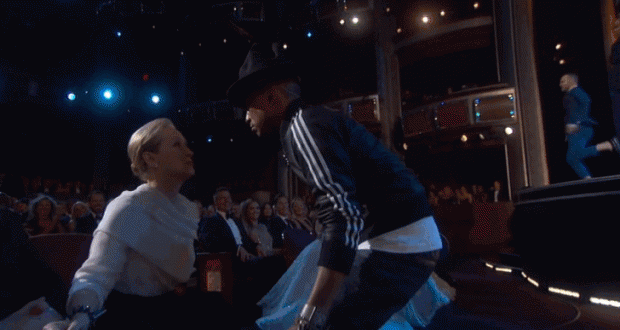Barely hours after the 2014 Oscars ceremony had finished, online headlines were touting its most gifable, or GIF-Able moments. The word refers to the image file format GIF (Graphics Interchange Format) which was originally created as a means of exchanging colour images between incompatible computers. Predating the World Wide Web, it should have gone the way of other pre-e-historic technology, but has found a new lease on life in the form of short animated clips from TV shows or movies that are considered memorable. Apparently being gifable is to the image what being quotable is to the word – at least that’s what one Australian news site claimed when it described the actor Jennifer Lawrence as one of Hollywood’s “most quotable and gif-able treasures”. The American shopping giant Kmart tried to cash in on the concept by coining “giffing out” for its Christmas ads last year. They depicted people caught in a loop of excitement at their purchases. Public reception of these ads was not generally very favourable – one critic comparing the repetitive image to a record stuck in its groove. It’s an appropriate analogy. Both of these dated forms of media have managed to survive against the odds in this world of almost immediate obsolescence.
Please login below to view content or subscribe now.
 Campus Review The latest in higher education news
Campus Review The latest in higher education news

